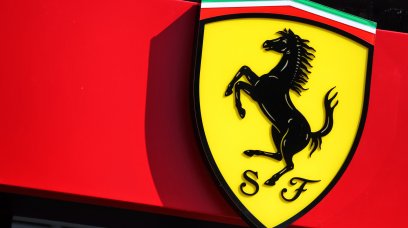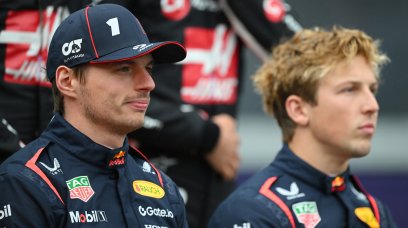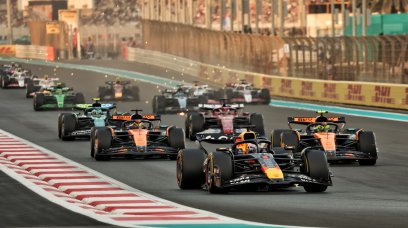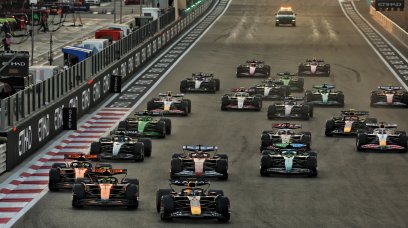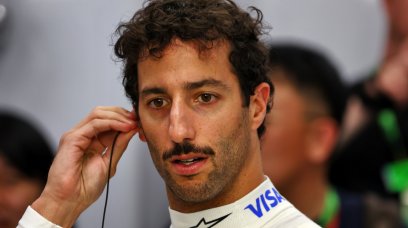On Friday, Haas became the first Formula 1 team to show off their 2022 design as they revealed studio renders of the VF-22. While team boss Guenther Steiner explained that the renders represent the car in an early stage of development, there are still a number of striking differences between their 2022 design and that of the car F1 revealed last year – built to conform to the revolutionary new rules. The main differences are with the front wing and the rear floor, so let's delve into the details.
A narrow, tapering rear-end of the car
Comparing the Haas VF-22 against the F1 car design from above, it is clear that there is quite a difference when it comes to the sidepods. Moving from the sidepods towards the rear of the car, the Dallara-designed chassis is much narrower than the F1 offering. A narrower car has several advantages over the more chunky design, particularly in terms of space and weight-saving. There is also more room for improved airflow as the air moves over the car, which could mean far more over-car downforce being generated than originally anticipated.
More space for the rear suspension
Given the tapering sidepods open up much more space between the two rear wheels, there is far more room to improve packaging for elements such as the diffuser, the exhausts and the gearbox. The new 'simplified' designs of the new generation F1 car should ensure cleaner airflow and are intended to offer less space for complex aerodynamic concepts. The compact design of the Haas means that, as expected, there is far more aggression from the technical minds of an F1 team's design department than from F1's promotional car.
Are Haas bluffing with their suspension pictures?
The front suspension is an interesting topic for the next generation of F1 cars. There is plenty of talk about pull-rod suspension instead of the push-rods of past seasons. These rods are the rods that push or pull the rockers – a part of the suspension that is located in the nose of the car. In 2021 (and the years before), the F1 cars had a higher nose, which made 'pulling' the rockers with a pull-rod almost impossible. Next season, the nose may be a bit lower, so that there is room to adjust the suspension rod as a pull-rod instead of a push-rod. The advantage of this is that the nose can be much closer to the ground, making the aerodynamic advantage much greater. The centre of gravity (CoG) of the car is also lower with a pull-rod suspension. The lower the CoG, the better the road holding of the car. The more heavy parts placed low, the better the car's CoG. Logically, this makes the F1 car faster. At Haas, however, we see the normal push-rods in the photo, which could be there as a bluff. Looking closely at the front suspension, the push-rod (the rod below at an angle of about 45 degrees) appears to be mounted differently on the VF-22 than the rods around it. Given the team's ties to Ferrari, which use a pull-rod suspension, this may have been done deliberately to hide a switch to the pull-rod. In the photo below, the attachment of the suspension is visible, where it appears as though the upper rod is not completely correctly mounted on the Haas car...
Smaller holes for cooling
The photo above also shows the front of the sidepod, where there are air intakes for cooling the engine. These holes are smaller than expected and have a more rounded shape than the ovals of the F1 standard concept. These smaller holes provide less cooling, although the air inlets are in a favourable position.
Haas' front wing is strikingly different
The front wings may consist of a maximum of four plates in 2022. The endplates have also been simplified so that less dirty air flows are created. Although the wing rules appear quite restrictive, Haas' concept wing differs from F1's version. The photo below shows that the wings become much narrower towards the nose. Also, the angles of the front wing plates are much more pointed than the F1 concept.
The rear of the VF-22
Finally, the rear of the VF-22 is virtually identical to the F1 concept shared last year. There is far less room for a team to apply their own interpretation here, although it is still noticeable on the Haas that the DRS flap is missing. However, this will undoubtedly be added to the 2022 car, because this is stipulated in the rules and, obviously, still has a significant advantage when overtaking. There are minor differences at the edge of the rear wing, although the design of this wing is almost completely standardised by the FIA, leaving few options for customisation. The renewed wing designs should also ensure less dirty airflow being thrown off the rear of the car.
Most read
